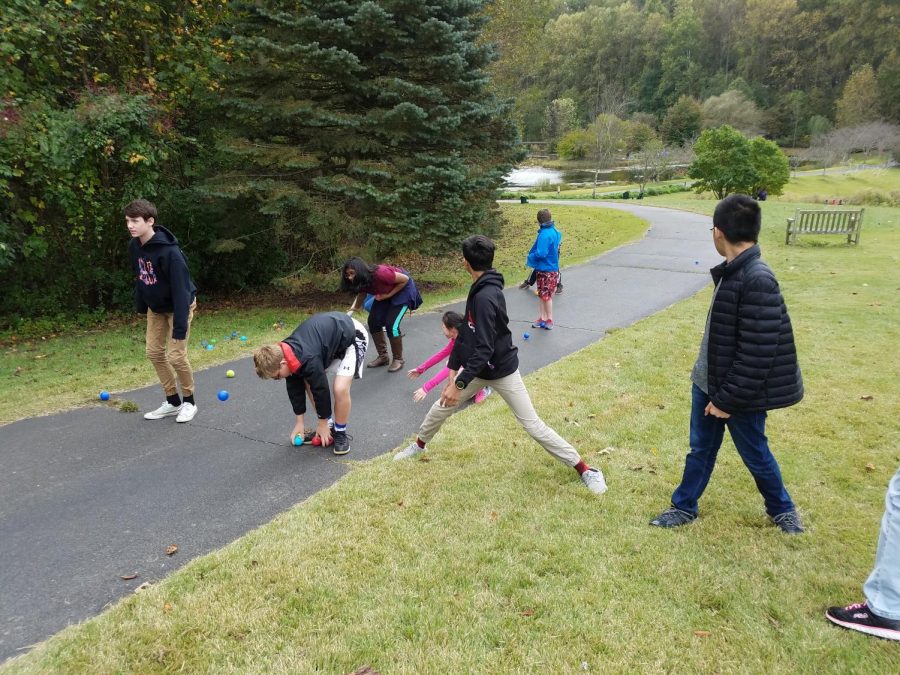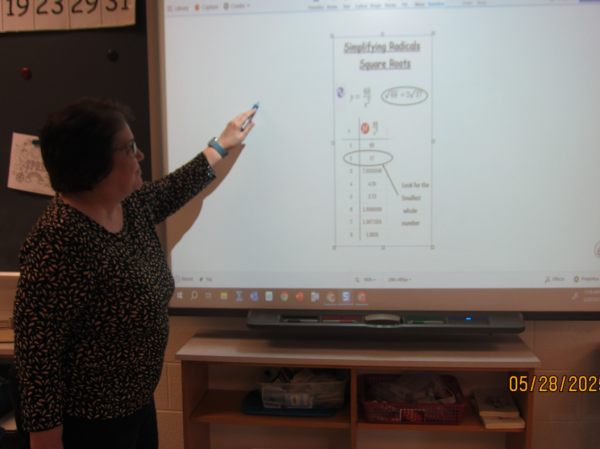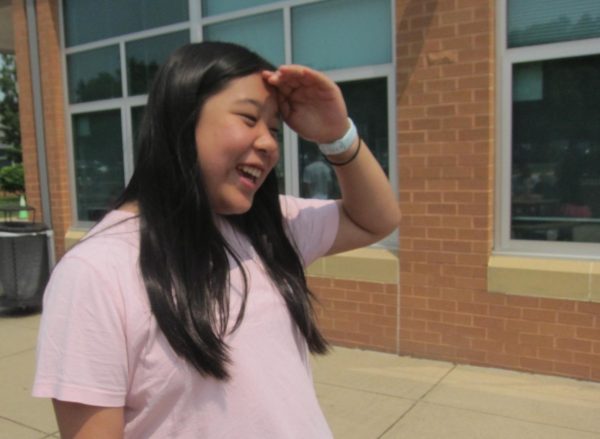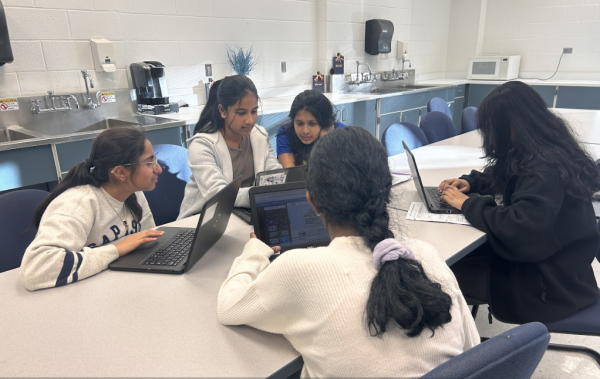Meadowlark Botanical Gardens: A learning experience to remember
Students enjoy an educational trip to Meadowlark Botanical Gardens.
Students play runoff game
The sounds of seventh grade students filing off school buses and educational communication filled the beautiful, serene atmosphere. The Rachel Carson Middle School students, enthusiastic about their scientific trip, have just arrived at their destination: Meadowlark Botanical Gardens.
In the week of Oct. 16-20, the seventh grade students at Carson went to the Meadowlark Botanical Gardens in Wolftrap for a field trip. The Meadowlark Gardens have 95 acres of ornamental gardens that display unique plant life. The aroma of freshly cut grass dispersed throughout the atmosphere. The sunlight reflecting off the crystal clear lake caught many students’ and teachers’ attention.
“It was a very nice field trip,” said Ms. Barbara Poole, a seventh grade English teacher who helped make the science trip possible. “The setting was beautiful, I’ve never actually been there.”
Although the trip was fun, it was also educational. Students enriched their knowledge about the first few topics they learned in science, including watersheds and ecosystems, by participating in many educational activities.
“There were George Mason students that were teachers who taught us about the place and guided the activities. One of my favorites was the weather runoff game,” Ms. Poole said.
The runoff activity was an exercise that demonstrated the concept of erosion. Students rolled plastic balls, which represented loose sediment, into their peers’ feet. This resembled the way tree roots can impede unwanted sediment. Students learned that humans must preserve the environment, especially our trees, in order to reduce erosion. With a small amount of plants, sediment can easily get through the roots, leading to severe environmental damage; with many healthy tree roots holding the soil in place, it is more difficult for anything to get through.
Students identified macro-organisms found in the lake using a classification key. The chart would start with general characteristics, for example, whether or not the creature had a tail. After determining the characteristic, students would go further down the chart where the characteristics would become more specific. Eventually, they would identify the name and type of the organism.
“I felt this activity was a good example of scientific method that gave students a brief insight of what a scientist would do to identify an organism,” said Nathan, a seventh grade student.
As well as studying organisms, the students were also shown some animal bones that were collected on the site.
“It was so cool! We saw a dead skull of a deer, and probably the best part, the snakeskin,” said Luke, another seventh grade student, “that was definitely my favorite part.”
In order to support the biodiversity of the site, the lake had to have had good water. Students got to be real scientists and performed water quality tests to make sure the park maintained a healthy ecosystem. Tested qualities included pH, temperature, clarity, dissolved oxygen, and levels of nitrite. Students tested water from the lake and measured each quality. Performing these tests gave the students a sense of scientists’ constant efforts to preserve the world’s depleting amount of clean water.
Throughout this trip, students have gotten an opportunity to learn how science is used in the real world. They were able to apply the ideas they learned in class to an actual ecosystem.
“This trip was very fun and educational,” Nathan said. “I hope that next year’s seventh graders get to have the same opportunities that we did. This trip helped me understand the content I learned in class a lot better.”









